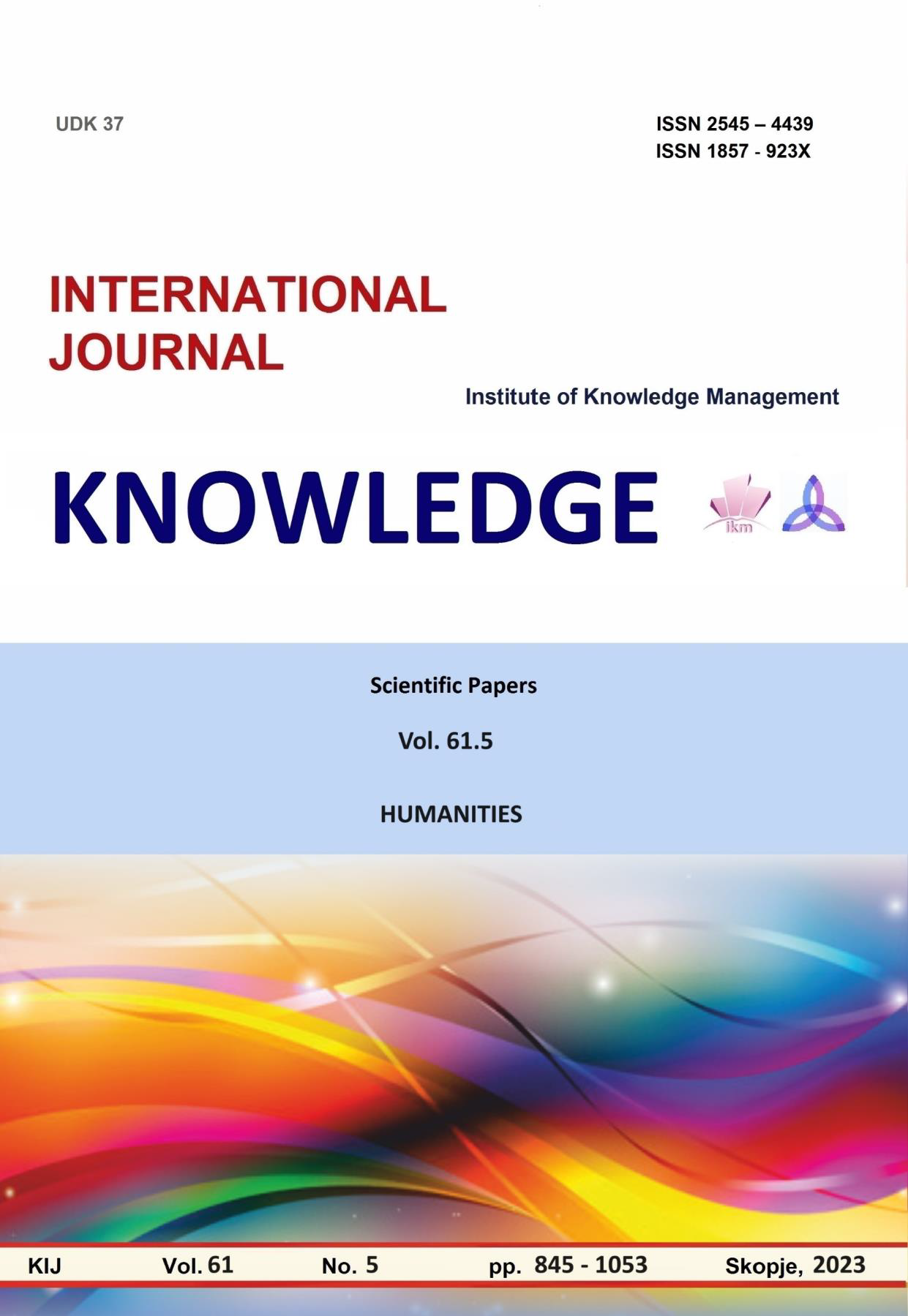CONTEMPORARY ACHIEVEMENTS IN THE FIELD OF PERCEPTUAL MEASUREMENT OF MUSICAL ABILITIES
CONTEMPORARY ACHIEVEMENTS IN THE FIELD OF PERCEPTUAL MEASUREMENT OF MUSICAL ABILITIES
Author(s): Igor Nikolić, Slobodan Kodela, Bogdan R. PindovićSubject(s): Social Sciences, Education, Fine Arts / Performing Arts, Music, Sociology of Art
Published by: Scientific Institute of Management and Knowledge
Keywords: musical abilities;measurement;assessment;tests;music pedagogy
Summary/Abstract: Musical abilities and the possibilities of measuring them have drawn the attention of both music educators and music psychologists for decades. Due to parallel development of these disciplines, the assessment of musical abilities can be categorized into two main types – evaluation by music educators (primarily based on reproduction assessment) and the measurement of perceptual abilities through tests. Although the majority of standardized psychological tests for musical abilities emerged during the 20th century, it is evident that this issue continues to inspire researchers in more recent times. Consequently, there is a considerable number of newer tests for assessing musical abilities. The aim of this study is to present the characteristics of tests published after the year 2000, highlighting their potential applications in educational practice and within the scope of research on musical abilities across different disciplines. The following instruments have been analyzed: Goldsmiths Musical Sophistication Index (Gold-MSI), Montreal Battery of Evaluation of Amusia (MBEA), University of Washington Clinical Assessment of Music Perception Test, The Montreal Battery of Evaluation of Musical Abilities (MBEMA), MBEMA on tablet, Implicit Tonal Ability Test (ITAT), Musical Aptitude Test (MAT), Musical Ear Test (MET), Profile of Music Perception Skills (PROMS), Brief PROMS, PROMS-S, Mini-PROMS, and Micro-PROMS. The results of the research reveal evident differences in the content and purpose of the tests. Some tests can be applied as early as the age of 4 to 6 years (MBEMA on tablet), from 6 to 8 years (MBEMA), and from 6 to 12 years (ITAT), while others are intended solely for adult participants. Variations also exist in the content of the tests, determining which types of musical abilities will be measured. While MET includes only two subtests (Melody and Rhythm), others incorporate tasks such as Harmony, Dynamics (MAT), Tuning, or Loudness (PROMS). Another significant variable is the duration of the assessment, ranging from as little as 10 minutes for implementation (Micro-PROMS) to as much as 90 minutes (MBEA). Depending on the research needs, the manner of expressing results should be considered, as most tests calculate a total score, whereas MAT presents results in the form of a five-dimensional profile. In conclusion, there is a solid selection of tests for musical abilities published after the year 2000, accessible to researchers. Some of them are adapted for online use, enabling a broader range of participants in research in the field of music pedagogy and other disciplines. We hope that the test overview presented in this study will aid researchers in selecting suitable instruments for their investigations, taking into account different types of abilities in relation to research needs, participant age, or planned assessment time.
Journal: Knowledge - International Journal
- Issue Year: 61/2023
- Issue No: 5
- Page Range: 1005-1010
- Page Count: 6
- Language: English

